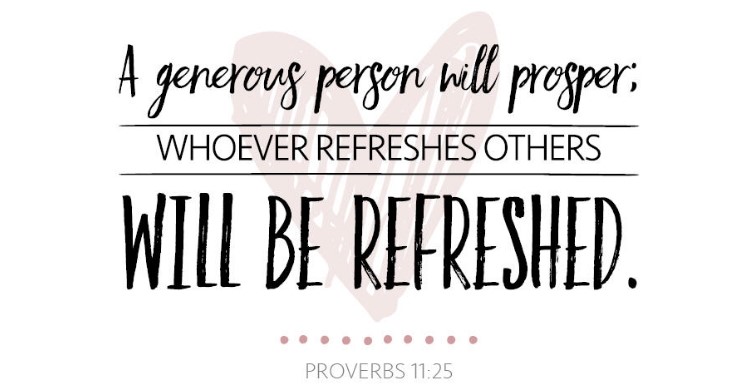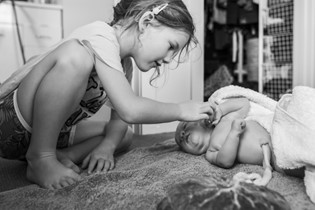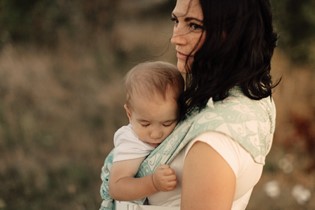Tips for raising generous kids

If the world of the generous gets larger and larger then teaching our children generosity really is the gift that keeps on giving. Ellie Gwilliam shares some tips on raising generous kids.
Young children are very good at expressing their needs and desires. Most don’t have a problem asking for the things they want! Actually, this is not purely the domain of the young child. Most older children and teenagers keep a running list of all the things they’d like the loving adults in their lives to provide them with – from ice creams to ponies, there’s no end to the ways we can make our children’s lives ‘better’ by giving them stuff. And while making sure one’s needs are met is key to survival (hence our children come pre-wired to communicate their requirements, often with a sense of great urgency), it is also a valuable life-skill to see beyond ourselves and learn responsiveness to the needs of others. After all, it is better to give than to receive. “Really?” questions the kid quietly penning an extensive letter to Santa Claus. Yep, really. Jesus himself said so. And it’s an ideology Santa clearly endorses too, as is evidenced by his generous commitment to toy distribution for what is a rather minimal return (cookies and milk/beer).
Generosity is a lovely quality – by definition it is warm-hearted, considerate, humane and sympathetic. The dictionary says a generous person excels in readiness or liberality in giving. There is a sense here that in order to be generous, we need to be prepared – we need to be ready. Step in parenting. Generosity is the sort of trait we can teach our children when they are young in preparation for a lifetime of being unselfish, ready to give and quick to share – generally being all-round-awesome human beings.
FOR THE GREATER GOOD
Generosity is good for us. While a generous act benefits others, it increases our own wellbeing too, explains Tchiki Davis in an article for Psychology Today. In an era where mental health issues are rife, a seemingly simple generous act can do us a world of good. Practising generosity is a great choice for improving wellbeing because it has an exponential affect, explains Tchiki. Offering goodness to someone not only makes you feel good, but it inspires further goodness and the feel-good vibes are spread via the ripple effects of generosity.
Generosity also builds other positive emotions and thinking habits, like gratitude, joy and contentment. Perhaps of most significance, in terms of the common good, generosity encourages empathy. Teaching our children to be generous goes hand in hand with teaching them to think about others, ie how others feel and what others might need. As we’ve already mentioned, children are naturally quite self-involved. This is not necessarily a bad thing, as there is wisdom in looking after oneself. However, if we can encourage our children to consider not just their own world but also the bigger picture, the benefits are far-reaching and an even greater wisdom comes in to play. As we teach generosity – even by way of seemingly small gestures – we are teaching our children to look at the world around them and recognise needs they have the ability to address. They’ll see hunger as an opportunity to feed people. They’ll see poverty as an opportunity to reconsider distribution of resources. They’ll see environmental problems as an opportunity to brainstorm and collaborate – perhaps even an opportunity to clean their rooms! In short, they’ll see problems as an opportunity to find solutions and they’ll grow into the kind of world-changers Oprah liked to interview.
GOODNESS ME
So now we’ve set the bar of idealism inspirationally (dauntingly?) high, just how do we go about raising generous humans?
Firstly, and I bet you saw this coming, we – the grown-ups – need to set an example. The best way to teach our children what generosity looks like is to model it in our everyday lives. They’re little sponges, right, so if we regularly respond generously to those around us, chances are our children will learn to as well. And it is not just about practical giving. Generosity of spirit can be reflected in forgiveness, gentleness and honouring others. Ah yes, how noble. I hope someone generously brings you a cup of tea right now to help all this idealism settle!
There are plenty of other ways to teach our kids that sharing is caring too. Firstly, label generosity and give it lots of praise. The adage of catching your children being good works here – praise them for sharing their toys with a sibling or friend and label the gesture as generous so they begin to understand the significance of meeting the needs of others. “I loved the way you shared your favourite train while you were playing with Sam, it was really generous of you to let him have such a long turn with it.”
Sharing food has health implications, with kindergartens and schools ruling out such ‘generosity’ for fear of the germs that are also shared. There are sanitised ways to encourage generosity at home in this regard though – who in the family is going to have the last chocolate biscuit will test the reserves of young and old.
|
FOUR IDEAS FOR FAMILY GENEROSITY ✔ Sponsor a child through World Vision or TearFund. We’ve done this for years but I’ve only recently taken a moment to really explain the process to our children. In a moment of inspiration (and also frustration that I never had enough time for this task myself) I asked our middle daughter if she would like the job of replying to the letters that are emailed to us from Krishna, our sponsor child in Tanzania. Never one to pass up a chance to use the computer, Lottie is delighted with this responsibility, which has also given meaning to the reality of sharing with a child on the other side of the world. ✔ Go to the supermarket and let your children choose some non-perishable food items that other children might like, and then donate them all to a food bank charity. This is a Christmas tradition in our family, as there is usually a collection point for the Salvation Army right there at the supermarket checkout. It is a strange feeling leaving the supermarket empty-handed, but I’m going to be honest with you – it’s also an awesome feeling. ✔ Get your kids to help you with a cull of their clothing and toys, helping them to understand that the items they no longer need could really benefit someone else. Encourage them to consider the condition of items – this is not a chance to give away your junk, but to share with others items in good condition that still have plenty of life left. ✔ Volunteer! Generosity is not just about money; we can also be generous with our time. Volunteer as a family to do a beach clean-up, attend the kindy working bee, tidy an elderly neighbour’s garden or help a grandparent with a project. Explain the concept to your child – “We’re going to spend two hours helping Mrs Smith today,” to reinforce the message that you are giving someone some of your time.
|
Let’s talk about cash. I asked financial advisor and father-of-three Darcy Ungaro for his forecasts on raising generous kids. “It’s not only about teaching kids to ‘make a difference’, it’s also about teaching the power of money. Money has power to do good, or cause harm,” states Darcy, who proactively allows his kids plenty of opportunities to experience the good that money can do.
Darcy is an advocate for the ‘money jar’ concept adopted by many a cash savvy educator and parent. Children have jars labelled ‘Spend’, ‘Save’ and ‘Share’ (and Darcy has gone next-level with his school-aged kids who have a fourth jar for ‘Investment’). The parents’ involvement: have a stack of $1 coins handy and pay your children for the jobs they do around the home. Tooth fairy funding and gifts from grandparents could also be a part of this scheme. Children then choose which jar they are going to deposit their coins into.
The beauty of the jar system for teaching financial management is that kids can make real choices about what they do with their hard-earned cash. This is especially pertinent when it comes to the Sharing or Giving jar. Darcy’s key advice is that giving needs to be a tangible experience for children. “Yes, it’s easier and more convenient to swipe Dad’s credit card or tap Mum’s phone at a donations kiosk, but when children take their money somewhere and physically give it away, it’s a genuine sacrifice.” A child donating a $1 coin may seem incidental, but the experience of giving away something you’ve earned, knowing what you could have spent it on, is profound.
Darcy’s final observation is valuable food for thought. “People who are financially generous are financially successful. It’s almost like a kind of magic is working behind the scenes – magic that’s unleashed when unpredictable, selfless, generous action is taken consistently, through good times and bad.” This is a lesson for us all, but an especially valuable encouragement to equip our children for a lifetime of stewardship that enriches not only their lives, but also the lives of those around them. Which could come in handy further down the track when they’re making choices on our behalf about rest-home care! Room with a view please kiddos.

Ellie Gwilliam lives in Northland. She tries to keep cash on hand for the household’s nine money jars, but admits to most pocket money allocation being in the form of IOU.

AS FEATURED IN ISSUE 48 OF OHbaby! MAGAZINE. CHECK OUT OTHER ARTICLES IN THIS ISSUE BELOW

















